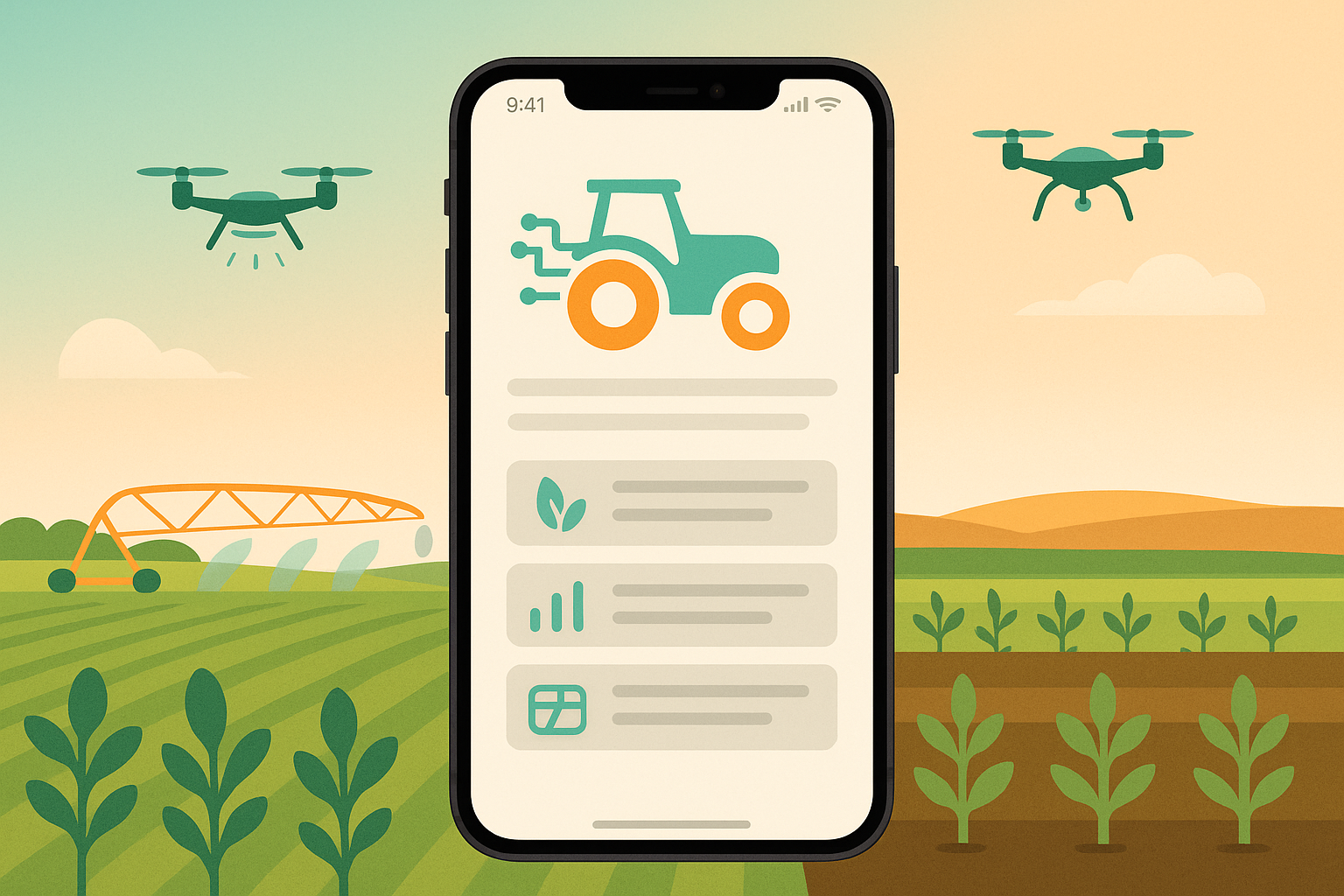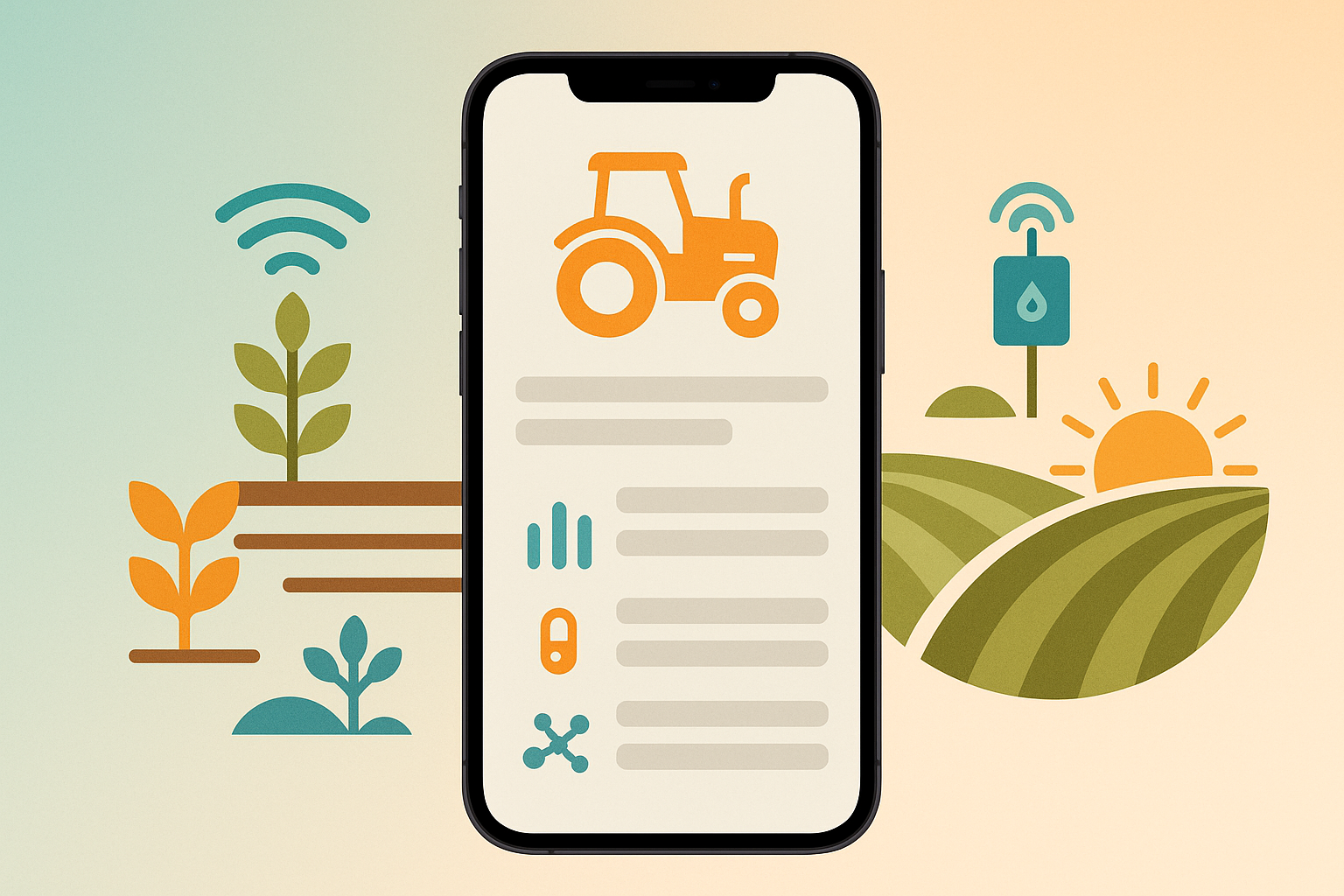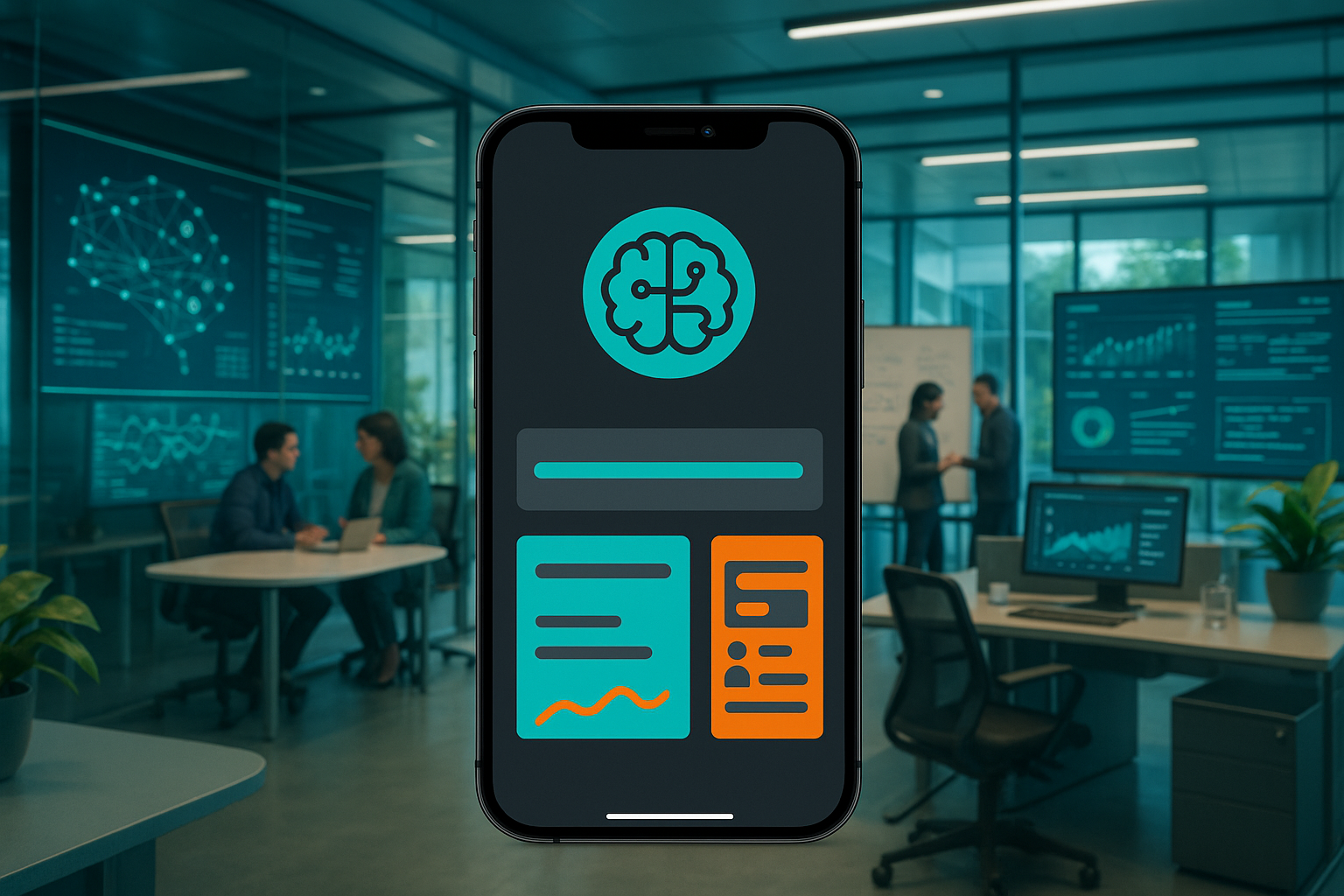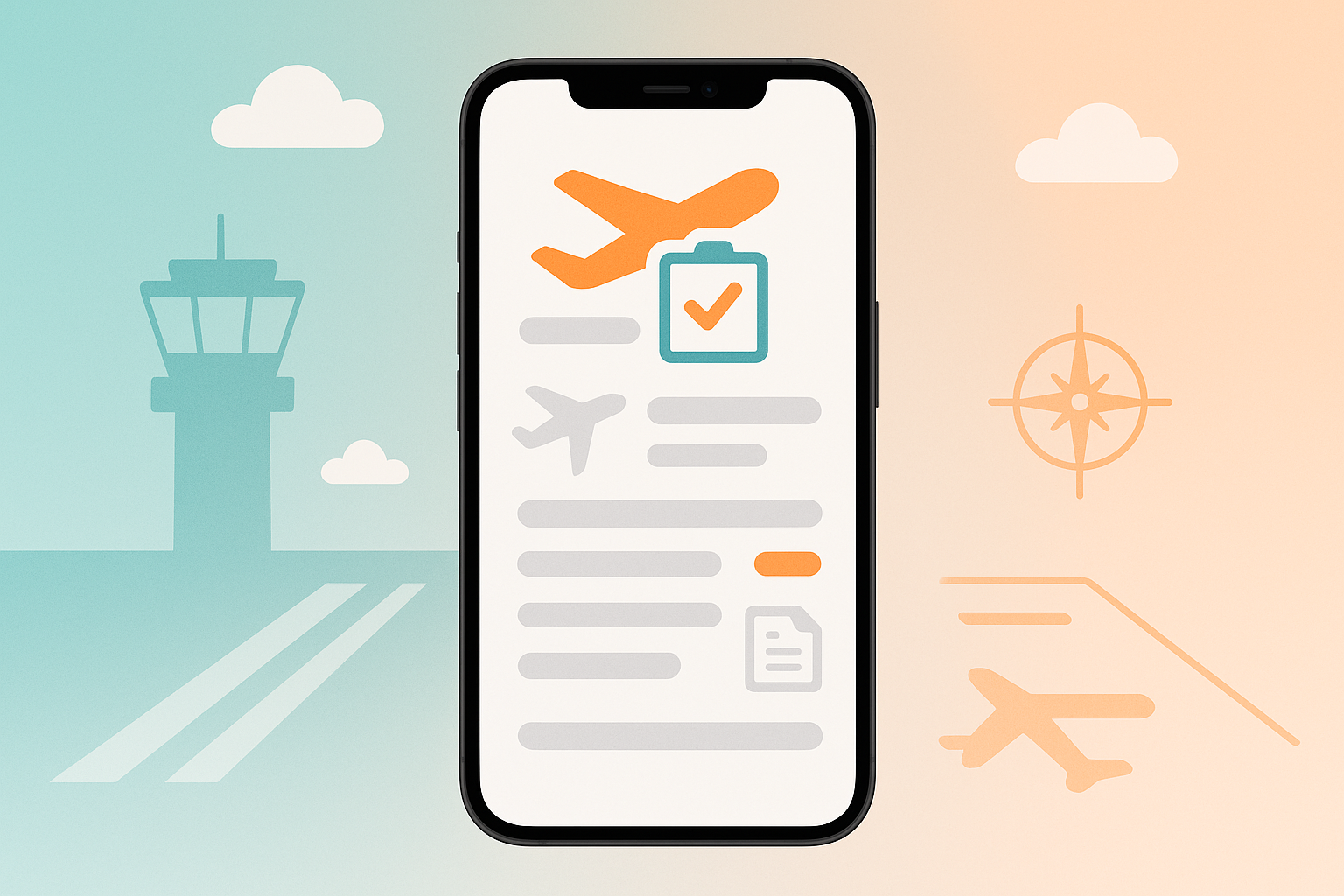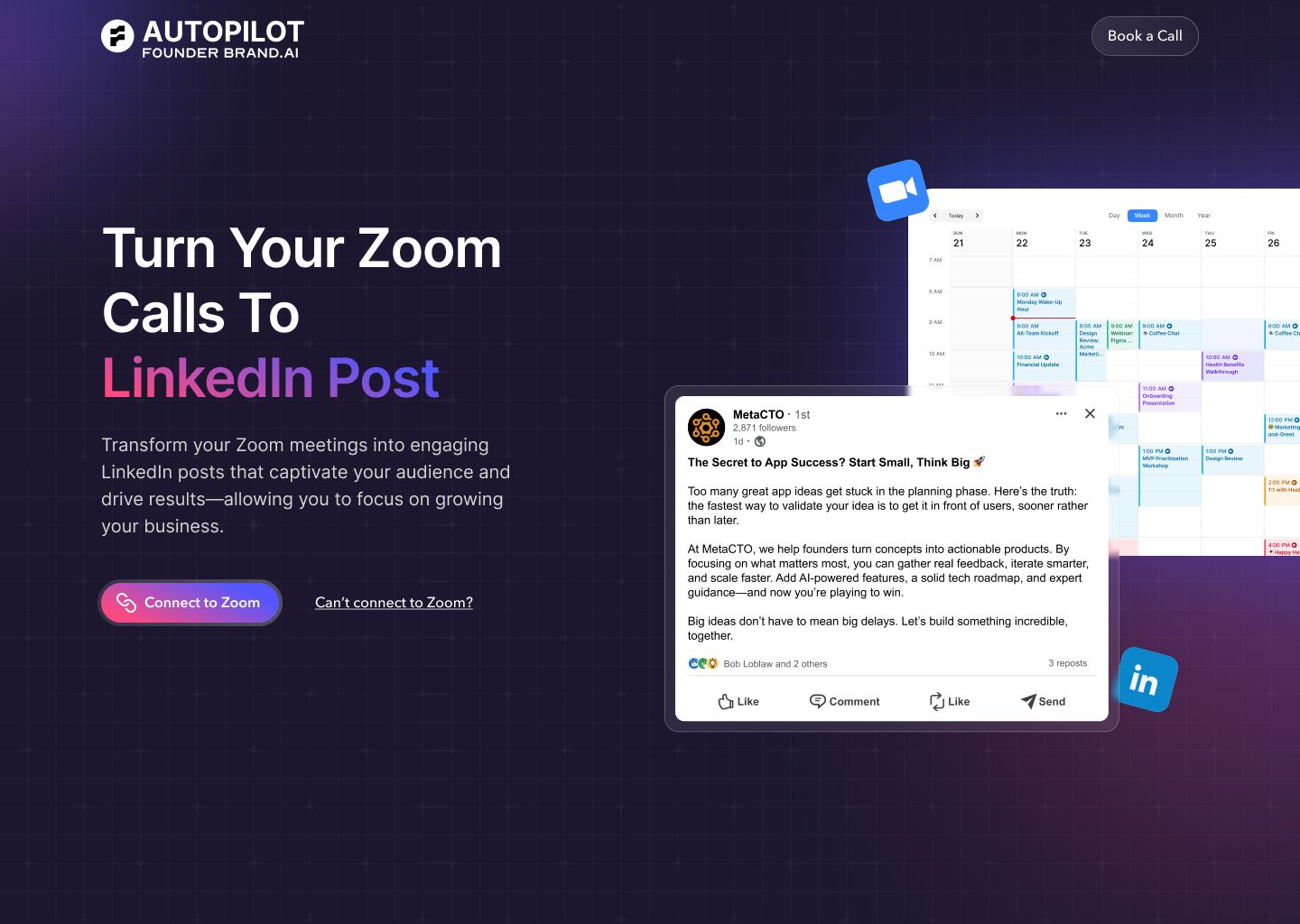Introduction: Tilling the Digital Field
The agricultural sector is undergoing a profound transformation, driven by technology designed to make farming more efficient, profitable, and sustainable. This wave of innovation, known as Agricultural Technology or Agtech, promises to solve age-old problems with modern solutions. At the heart of this revolution is the Agtech application—a tool that puts the power of data, automation, and artificial intelligence directly into the hands of farmers.
However, developing a successful Agtech app is far from simple. It presents a unique set of obstacles that can derail even the most promising projects. From the sheer complexity of integrating diverse hardware and software to the persistent lack of reliable internet in rural areas, building an app that works seamlessly in the field is a significant challenge. Add to this the critical need for data security and the specialized knowledge required to understand a farmer’s workflow, and the task can seem insurmountable for an in-house team.
As a top US AI-powered app development firm with over two decades of experience, we at MetaCTO have seen these challenges firsthand. We specialize in building sophisticated mobile applications and integrating complex technologies like AI and IoT to create powerful, user-friendly solutions. We understand that an Agtech app isn’t just another piece of software; it’s the central hub for a farm’s entire operation.
This article will serve as your comprehensive guide to Agtech app development. We will explore what defines an Agtech app, detail the difficulties of building one in-house, outline the potential costs, and introduce the leading companies that can help bring your vision to life. Our goal is to equip you with the knowledge to navigate this complex field and make informed decisions for your business.
What Is an Agtech App?
Agtech, at its core, encompasses the vast array of innovations aimed at improving every facet of agriculture: efficiency, profitability, sustainability, and resilience. It is a broad category that includes physical devices like sensors and robotics, as well as digital technologies like automation and artificial intelligence. An Agtech app is the software interface that brings these disparate elements together, transforming raw data into actionable insights for the farmer.
These applications can function in two primary ways:
- Standalone Tools: An app might work by itself to provide specific value, such as scheduling and automating farm tasks through a simple web-based or mobile interface.
- Networked Hubs (IoT): More commonly, Agtech apps serve as the central console for a network of interconnected devices—the Internet of Things (IoT). In this model, sensors, vehicles, and other hardware connect to each other and the internet, feeding real-time information to the app.
The primary function of an Agtech app on the farm is to empower better, faster decision-making. By aggregating data from various sources, it provides a clear, reliable, and instantly accessible picture of the entire farming operation. For instance, instead of manually checking a distant water trough, a farmer can simply open an app on their phone and see its exact water level. They can check the wind speed in a specific paddock before spraying crops or monitor soil moisture levels to optimize irrigation schedules.
Beyond day-to-day operations, these apps provide tangible proof of a farm’s performance. They generate reports and analytics that can offer evidence of sustainability practices, demonstrate improved efficiency, and calculate increases in profitability, which is invaluable for securing loans, meeting regulatory requirements, or attracting investment.
Why In-House Agtech App Development Is So Difficult
While the idea of building a proprietary Agtech app in-house is appealing, the practical realities often prove to be a significant barrier. The unique context of agriculture introduces challenges that are rarely encountered in other industries, requiring a unique combination of skills that most companies do not possess internally.
Technical Complexity and Specialized Knowledge
Modern Agtech solutions are not simple CRUD (Create, Read, Update, Delete) apps. They are complex ecosystems that must integrate a wide variety of technologies. A single application might need to communicate with IoT water sensors, pull data from weather station APIs, control autonomous vehicles, and run AI models for predictive analytics. This requires a development team with deep, cross-disciplinary expertise in:
- Mobile App Development: Building a native or cross-platform app that is intuitive and reliable.
- IoT Integration: Understanding the protocols and hardware to securely connect and manage a network of sensors and devices.
- Cloud Computing: Architecting a scalable backend to process and store massive amounts of data.
- AI and Machine Learning: Developing or implementing models for things like yield forecasting or pest detection.
- Data Science: Creating dashboards and analytics that turn raw data into meaningful business intelligence.
Finding individuals who possess all these skills is difficult; assembling an entire in-house team with this knowledge is a monumental and costly task. New Agtech solutions are often so intricate that they require specialized knowledge just to operate, let alone build and maintain.
Connectivity and Infrastructure Barriers
A fundamental assumption of most modern apps is the presence of stable, high-speed internet. This assumption breaks down in many rural and remote agricultural regions. The lack of reliable high-speed internet and mobile connectivity makes many cloud-dependent Agtech tools ineffective or completely unusable in the very areas they are designed to serve.
This requires a completely different approach to app architecture. Developers must build with an “offline-first” mentality, ensuring the app remains functional without a connection. This involves sophisticated data caching, local storage management, and robust synchronization logic that triggers when a connection becomes available. These are non-trivial engineering challenges that require experienced architects who understand how to build resilient, distributed systems. An agency like ours, with experience in launching over 120 successful projects, has encountered and solved these real-world constraints before.
Data Privacy and Security Concerns
For a farmer, operational data is highly sensitive business intelligence. Information about soil health, crop yields, livestock genetics, and water usage is proprietary and valuable. Consequently, farmers are rightly concerned about the privacy of their data and the potential for it to be misused or fall into the hands of competitors.
Building trust is paramount. An in-house team must not only implement but also stay current with best-in-class security practices. This includes:
- End-to-end encryption for data in transit and at rest.
- Secure authentication and access controls to ensure only authorized users can view or manage data.
- Compliance with data privacy regulations, which can vary by region.
- Robust defenses against cyberattacks.
The tech industry must actively find ways to ensure data privacy and security to foster adoption. Partnering with a firm that has a documented track record and adheres to international standards (like ISO 27001 for information security) can provide farmers with the confidence they need to adopt a new technology platform.
Common Applications and Features in Agtech
The term “Agtech app” can refer to a wide range of tools, each designed to solve specific problems on the farm. These applications often fall into several key categories based on their primary function.
Farm Monitoring and Management
This is perhaps the most common category, focused on providing a real-time, bird’s-eye view of the farm’s conditions. An app in this space serves as a central dashboard for data from various sensors.
- Water Management: Integrates with sensors in tanks, troughs, and irrigation lines to display water levels, flow rates, and alerts for leaks.
- Weather and Environmental Monitoring: Connects to on-farm weather stations to provide hyper-local data on temperature, humidity, wind speed, and rainfall. It can also incorporate soil moisture monitors to optimize irrigation and prevent water waste.
- Asset and Boundary Security: Uses gate and fence sensors to send notifications to a farmer’s phone if a gate is left open or a fence is breached, enhancing security and helping manage livestock movement.
Livestock Management
These apps focus on the health, tracking, and administration of farm animals. By digitizing records and enabling real-time tracking, they remove much of the manual labor involved in managing a herd.
- Electronic Identification (EID): The app syncs with EID tags on individual animals. This allows a farmer to scan a tag and instantly pull up an animal’s entire history, including birth date, medical treatments, weight, and lineage. This is critical for traceability, breeding programs, and health management.
Automation and Autonomous Operations
This category represents the cutting edge of Agtech, where apps move from simply monitoring to actively controlling farm machinery.
- Autonomous Vehicles: An app can serve as the command-and-control interface for self-driving tractors, drones, or other robotic equipment. Farmers can use the app to schedule tasks like planting, spraying, or harvesting, define the routes for the vehicles, monitor their progress in real-time, and receive alerts if an issue arises.
- Task Automation: Beyond large vehicles, apps can automate smaller tasks. For example, a farmer could use an application or a web-based interface to schedule the opening and closing of irrigation valves based on soil moisture data, creating a fully automated and highly efficient watering system.
Cost Estimate for Developing an Agtech App
Estimating the cost of software development is complex, as numerous components—from the intricacy of the designs to the number of features—influence the final price. The region of the development team and post-launch marketing efforts also play a significant role. However, it is possible to provide general cost ranges based on the application’s complexity.
Cost-Saving Strategies
Before diving into price tiers, it’s important to note a key strategy for managing costs: cross-platform development. Building separate native apps for iOS and Android can be expensive. Using frameworks like React Native or Flutter allows developers to write a single codebase that works on both operating systems. This approach can significantly reduce the cost of investing in and maintaining two separate apps without compromising on user experience.
Cost Tiers
-
Basic Agriculture Application: $10,000 to $30,000 A basic app focuses on delivering core information with minimal complex integrations. It typically includes a set of minimum viable features designed to provide immediate value.
- Features: GPS tracking for fields, integration with public weather report APIs, and a section for manual entry of market prices.
- Use Case: A simple tool for a small farm to keep track of basic field data and weather forecasts.
-
Advanced Agriculture Application: $50,000 to $150,000+ An advanced application represents a true digital transformation for the farm. It involves sophisticated technology, deep integrations, and custom analytics. The cost can escalate well beyond this range depending on the level of complexity.
- Features: This could include anything from real-time monitoring through IoT sensor integration, AI-driven predictive analytics for crop yields, custom data dashboards, or control interfaces for autonomous farm equipment.
- Use Case: A comprehensive farm management platform for a large commercial operation that integrates with dozens of sensors, provides AI-driven insights, and automates key workflows.
Top Agtech App Development Companies
Choosing the right development partner is the most critical decision you will make. You need a team that not only has the technical prowess but also understands the unique challenges and opportunities within the agricultural industry. Here are some of the top companies in the space.
1. MetaCTO
At MetaCTO, we specialize in building AI-enabled mobile applications that serve as the central nervous system for modern agricultural operations. With over 20 years of experience and more than 120 successful projects launched, we have a proven process for turning big ideas into market-ready apps that deliver tangible results.
Integrating diverse Agtech components—from IoT sensors and third-party data streams to AI-driven analytics—into a single, seamless mobile app is where many projects falter. It requires a rare blend of expertise in mobile architecture, backend engineering, and complex system integrations. This is precisely where we excel. Our experience building apps that use cutting-edge technology like computer vision AI for G-Sight or integrate AI for personalized coaching in the Bond dating app demonstrates our capability to handle the complex technical challenges inherent in advanced Agtech.
Our approach is to act as a deep technical partner, guiding you through every step of the process:
- Validate: We can help you build and launch a Rapid MVP in 90 days to test your concept, gather real-world feedback, and secure investor funding.
- Build: We handle the entire development lifecycle, from product strategy and design to building and launching a polished, market-ready application.
- Grow & Evolve: We don’t just build and walk away. We partner with you to grow your user base and ensure your app evolves with the latest technology, keeping you competitive in a fast-moving market.
For businesses looking to incorporate Agtech, we offer specialized AI Development and Custom Mobile App Development services tailored to your unique needs. We are experts at transforming complex requirements into intuitive, powerful, and scalable mobile experiences.
2. Folio3 AgTech
Folio3 AgTech has established itself as a leader in providing comprehensive, custom software solutions for modern farms. With over two decades in the AgTech industry and more than 600 completed projects worldwide, they have a deep understanding of the sector’s needs. Their key strength lies in their ability to handle everything from livestock monitoring to crop management through cutting-edge technology. Folio3 stands out for its deep integration with AI, IoT, and cloud-based solutions, offering tailored ERP and CRM systems designed specifically for agricultural needs. Their commitment to helping farmers achieve operational efficiency and sustainable growth is well-documented through client success stories. As a Microsoft Gold Partner and NetSuite Alliance Partner, and with a quality management system compliant with ISO 9001 and ISO 27001, Folio3 is a perfect choice for scalable, enterprise-grade farming solutions.
3. Trimble Ag Software
Trimble Ag Software is synonymous with precision farming. They offer a robust suite of tools designed to optimize workflows and enhance productivity for farms of any size. Their solutions are built around precision agriculture, fleet management, and powerful farm analytics. Key features include advanced tools for crop monitoring, efficient management of farm machinery fleets, and real-time data collection that provides farmers with actionable insights. For farm managers looking to make data-driven decisions to fine-tune their operations, from planting to harvest, Trimble offers one of the most comprehensive platforms on the market.
4. Conservis
Conservis specializes in farm data management, with a particular focus on simplifying the operational workflows of row farming. Their platform excels at providing tools for detailed crop planning, accurate yield forecasting, and efficient work order management. A standout feature of Conservis is its collaborative nature; it’s designed to be used by the entire farm ecosystem, including managers, staff, and external partners. By improving communication and enabling shared data access, Conservis has been shown to boost operational efficiency by up to 20%. It is an excellent choice for farms looking to bring structure, accountability, and clarity to their day-to-day operations.
5. Ag Leader Technology
Ag Leader Technology has carved out a name for itself with its GPS-based precision farming systems. Their entire focus is on helping farmers boost yields by making precise, data-driven adjustments in the field. The core of their offering includes advanced GPS-based field mapping and variable rate technology. This allows farmers to optimize the application of resources like fertilizer and seeds, applying them only where they are needed most. For farmers ready to embrace precision agriculture to maximize their output and minimize waste, Ag Leader provides powerful and reliable technology.
6. FarmLogs
FarmLogs offers an affordable and highly user-friendly farm management solution tailored for small—to medium-sized farms. It is a comprehensive option for budget-conscious farmers who still want powerful digital tools. The platform includes easy-to-use field mapping, real-time weather monitoring and data, and crop health tracking features. FarmLogs has successfully lowered the barrier to entry for digital farm management, making it an accessible and practical choice for a wide range of agricultural operations.
7. Agworld
Agworld stands out as a uniquely collaborative platform that connects farmers with their key partners, including retailers, agronomists, and advisors. This shared ecosystem fosters transparency and accountability across the entire agricultural supply chain. Agworld offers robust tools for in-season planning, execution, and monitoring, ensuring that all stakeholders are working from the same playbook. With advanced data analytics for operational oversight, it is a leading choice for farming operations that rely on close collaboration with external experts and suppliers.
8. Croptracker
Croptracker provides a robust suite of crop management tools designed to give farmers complete visibility into their crop cycles, from planting all the way to harvest. The platform is particularly popular among growers who need to adhere to strict regulatory requirements, as it includes strong features for compliance and record-keeping. Key functionalities also include crop health tracking and seamless integration with sensors for real-time monitoring. For farmers who need a comprehensive solution to manage every detail of their crop production and ensure traceability, Croptracker is an ideal fit.
Conclusion
The journey into Agtech app development is both exciting and demanding. As we’ve seen, an effective Agtech app is more than just code; it is a farm’s command center, a data hub, and a driver of profitability and sustainability. Building one requires navigating significant challenges, from the technical complexity of integrating AI and IoT to the fundamental infrastructure problem of rural connectivity. Understanding the potential costs and the landscape of expert development partners is the first step toward a successful project.
Navigating this landscape requires a partner with deep technical expertise, a proven process, and the ability to translate complex agricultural needs into a simple and powerful user experience. At MetaCTO, we combine our extensive experience in mobile app development and AI integration to help you build, launch, and grow a powerful Agtech application that meets the real-world demands of modern farming.
Ready to integrate cutting-edge Agtech into your product or build a new solution from the ground up? Talk with an expert at MetaCTO today to discuss your vision and build a roadmap for success.
